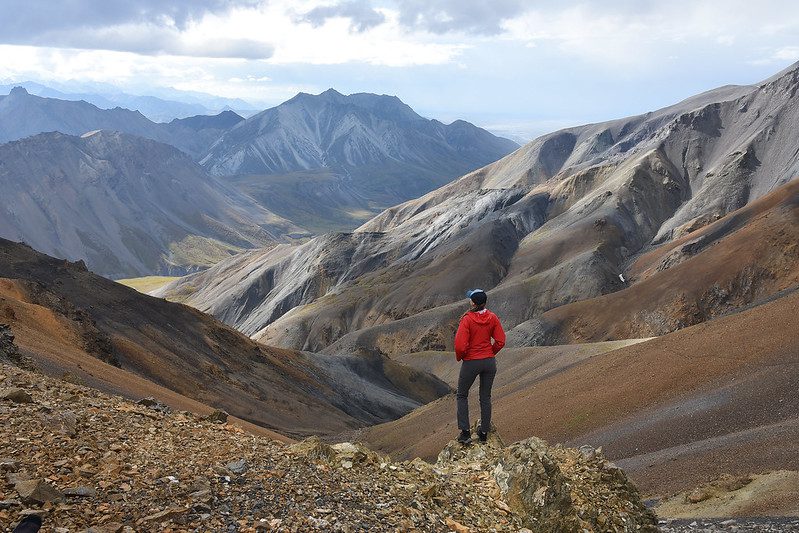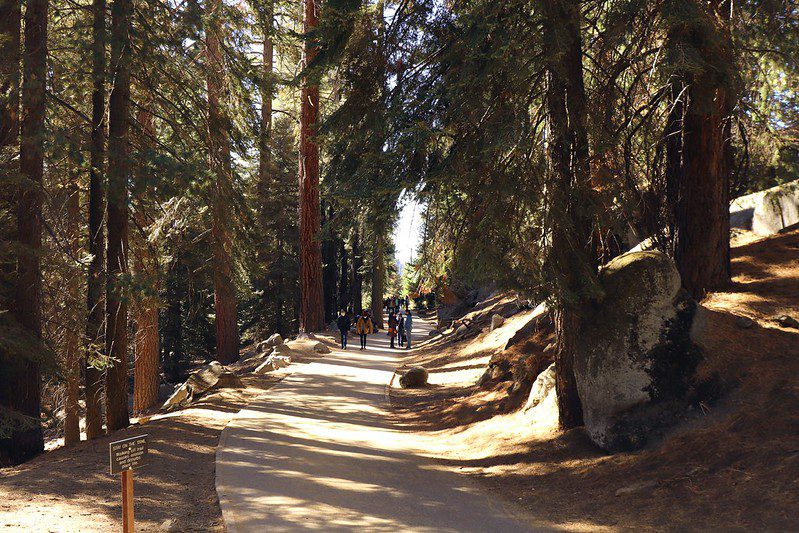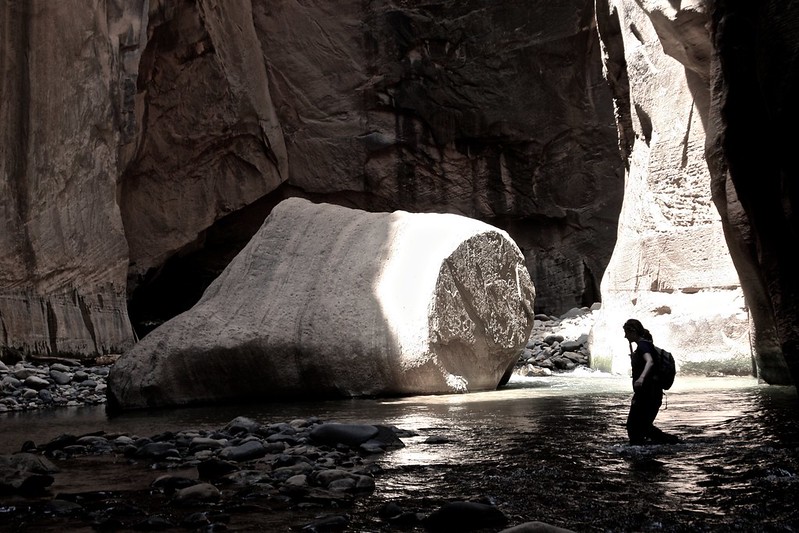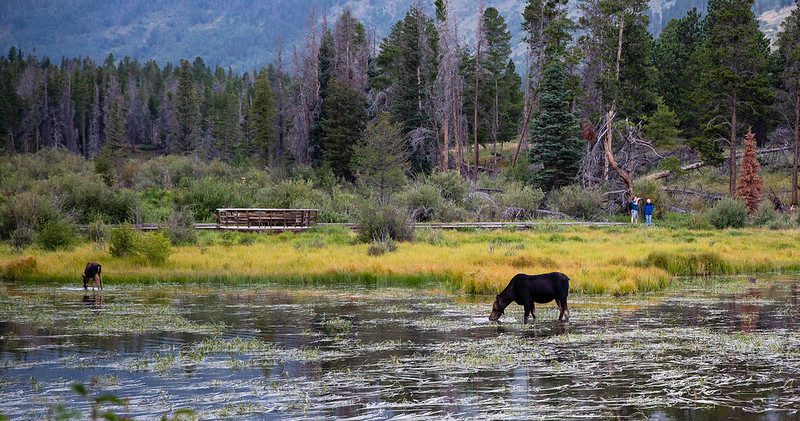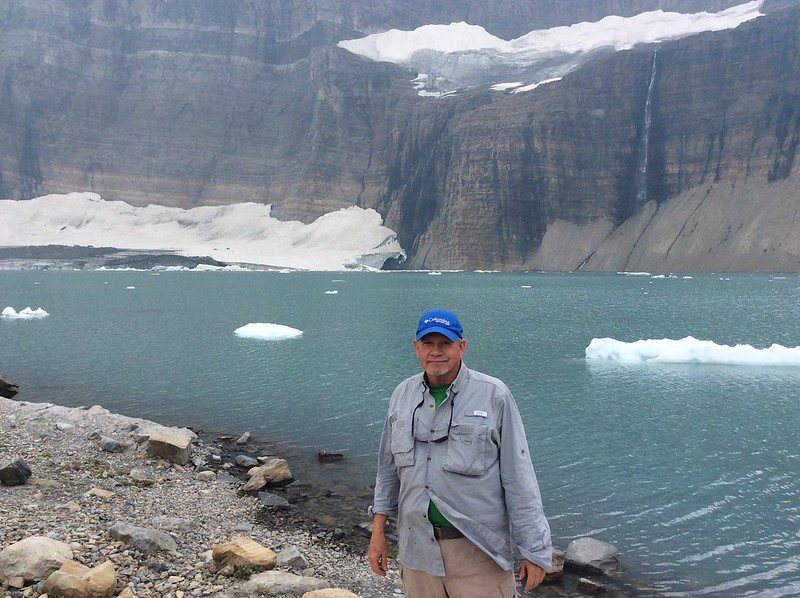Unveiling the Beauty and Risks of America’s National Parks
National Parks are the crown jewels of the United States, offering breathtaking landscapes, diverse wildlife, and endless opportunities for adventure. Yet, nestled amidst the beauty lies inherent danger. From towering mountains to unpredictable wildlife, these parks demand respect and preparation.
This guide delves into the top 6 most dangerous National Parks in the US, highlighting the potential hazards visitors might encounter. But don’t be discouraged! By understanding the risks and following essential safety tips, you can explore these incredible destinations with confidence and create unforgettable memories.
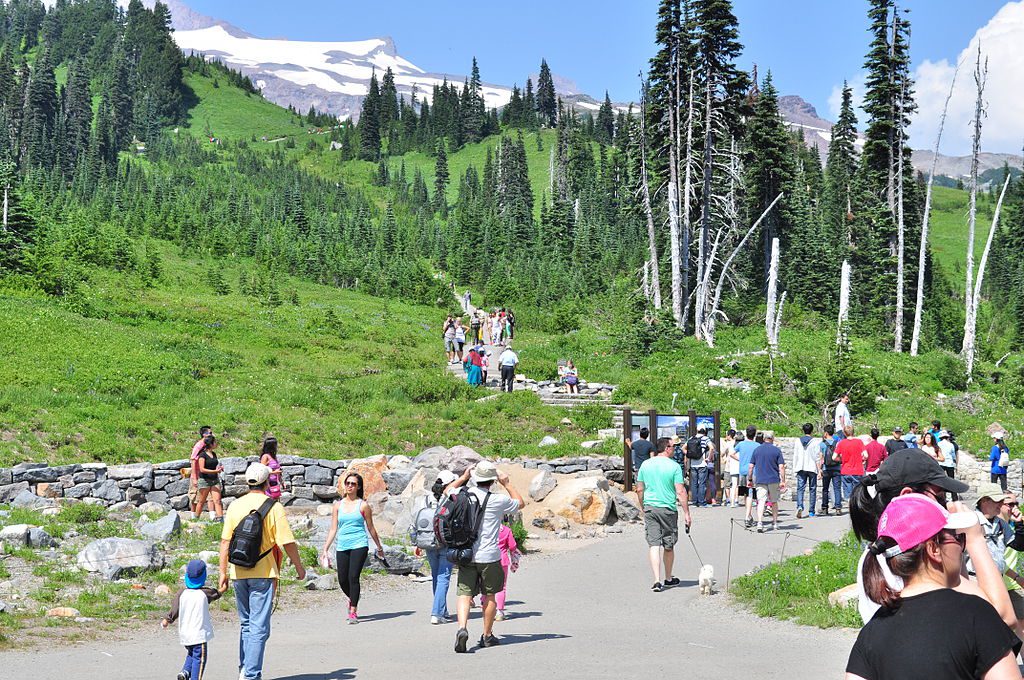
Mount Rainier National Park, Washington: A Majestic Peak with Hidden Hazards
Mount Rainier National Park boasts Mount Rainier, the tallest mountain in the Cascade Range. Towering glaciers, wildflower meadows, and stunning vistas make it a paradise for hikers and photographers. However, this majestic beauty comes with inherent dangers.
Potential Dangers:
- Avalanches: Mount Rainier is notorious for avalanches, especially during winter and spring. These unpredictable events can bury unsuspecting hikers.
- Glacier Hazards: Falling ice and crevasses pose a serious risk to hikers venturing onto glaciers.
- Volcanic Activity: While not currently erupting, Mount Rainier is an active volcano. Volcanic hazards include lahars (mudflows) and ashfall.
- Sudden Weather Changes: Weather in the park can be unpredictable, with snow and freezing temperatures possible even in summer.
Exhausting Hikes and Treacherous Terrain
Mount Rainier offers many breathtaking hikes, but some are incredibly demanding. High altitude, steep climbs, and loose rock can make even experienced hikers fatigued. It’s crucial to choose a hike that matches your fitness level and experience.
Notable Incidents:
- In 1981, 11 climbers were killed in a massive avalanche on Mount Rainier’s Disappointment Cleaver route.
- In 2014, a park ranger was seriously injured after falling into a crevasse on Emmons Glacier.
Safety Tips:
- Check avalanche conditions: Always check the latest avalanche forecast before heading out, and carry necessary safety gear like a beacon, probe, and shovel.
- Stick to marked trails: Glaciers and snowfields can be treacherous. Stay on marked trails unless you’re properly equipped and trained for glacier travel.
- Be prepared for all weather: Pack layers of clothing, rain gear, and sturdy hiking boots.
- Carry a communication device: A satellite messenger or personal locator beacon (PLB) can be crucial if you get lost or injured in remote areas.
- Train properly: Get in good physical shape before attempting strenuous hikes.
- Start early: This allows plenty of time to complete your hike before darkness falls.
- Use trekking poles: These can help with balance and stability on uneven terrain.
- Be aware of wet surfaces: Loose rock and wet trails can be especially slippery.
Remember: By following these safety tips and being aware of the potential dangers, you can have a safe and enjoyable experience exploring Mount Rainier National Park.
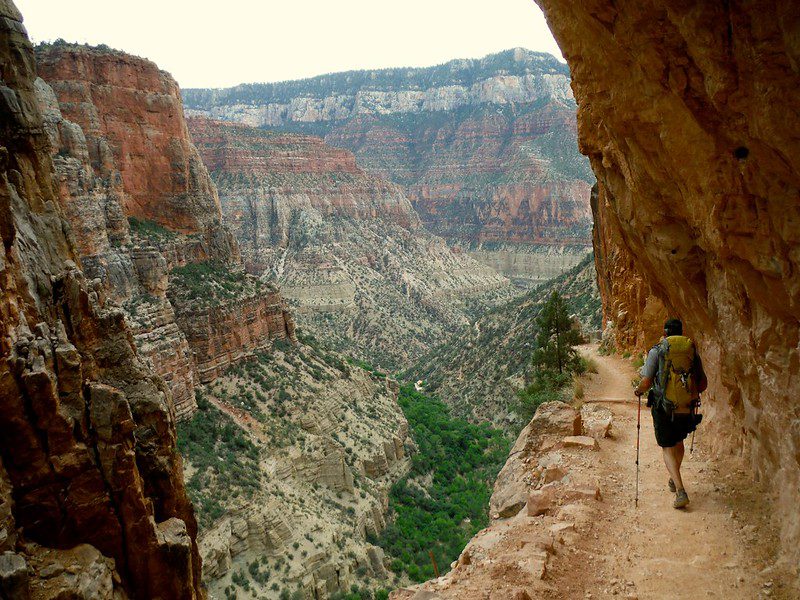
Grand Canyon National Park, Arizona: A Breathtaking Vista with Hidden Dangers
The Grand Canyon National Park is a natural wonder, its colossal size and vibrant colors leaving visitors awestruck. Carved by the Colorado River over millions of years, the canyon offers breathtaking vistas and diverse ecosystems. However, beneath its beauty lies a hidden danger zone.
Unique Hazards:
- Steep Cliffs: The canyon rim features sheer drop-offs of thousands of feet. One misstep can have tragic consequences.
- Extreme Heat: Temperatures at the South Rim can soar above 100°F (37°C) during summer months. Heatstroke and dehydration are serious risks for unprepared visitors.
- Flash Floods: Sudden downpours, even miles away, can cause flash floods in slot canyons and dry washes. These powerful torrents can sweep away unsuspecting hikers.
- Altitude: The South Rim sits at a high elevation of over 7,000 feet (2,133 meters). Altitude sickness can cause headaches, nausea, and fatigue, especially for those not acclimated.
South Rim vs. North Rim Average Temperatures (Monthly Averages)
| Month | South Rim (7,000 ft) | North Rim (8,800 ft) | Difference |
|---|---|---|---|
| May | 70°F (21°C) | 58°F (14°C) | 12°F (7°C) |
| June | 80°F (27°C) | 68°F (20°C) | 12°F (7°C) |
| July | 88°F (31°C) | 75°F (24°C) | 13°F (7°C) |
| August | 86°F (30°C) | 73°F (23°C) | 13°F (7°C) |
| September | 78°F (26°C) | 65°F (18°C) | 13°F (7°C) |
| October | 68°F (20°C) | 53°F (12°C) | 15°F (8°C) |
This table showcases the average monthly temperatures at the South Rim and North Rim of the Grand Canyon National Park. As you can see, the North Rim, located at a higher elevation (8,800 ft) experiences cooler temperatures compared to the South Rim (7,000 ft) throughout the year. The difference can be as significant as 15°F (8°C) during some months. This highlights the importance of considering elevation when packing for your Grand Canyon trip.
Notable Incidents:
- In 2017, a hiker died from heatstroke after collapsing near the South Rim in July.
- In 2019, several tourists were swept away by a flash flood in a slot canyon, luckily with no fatalities but highlighting the danger.
Safety Tips:
- Stay hydrated: Especially during hot weather, carry plenty of water and drink regularly, even if you don’t feel thirsty.
- Stay on designated trails: Never venture off marked trails or get too close to the rim.
- Be aware of flash flood risks: Check the weather forecast before hiking and avoid slot canyons during monsoon season.
- Acclimatize to altitude: If you’re not used to high elevations, take it slow and allow your body time to adjust.
Remember: By following these safety tips and being cautious around the rim, you can ensure a safe and unforgettable visit to the Grand Canyon National Park.
Yellowstone National Park, Wyoming: A Land of Wonders with Geothermal Wrath
Yellowstone National Park, the first national park in the world, is a geothermal wonderland. Fumaroles spew steam, vibrant hot springs paint the landscape, and geysers erupt with awe-inspiring power. This geothermal activity attracts diverse wildlife, making Yellowstone a haven for nature lovers. However, beneath the beauty lies a simmering danger.
Geothermal Dangers:
- Hot Springs: The scalding water in hot springs can cause severe burns or even death if someone falls in.
- Geysers: While breathtaking to witness, geysers are unpredictable. Staying a safe distance is crucial to avoid scalding from hot water or sudden eruptions.
- Thin Crust: The ground around thermal features can be deceptively thin and extremely hot. Stepping off boardwalks can result in serious burns.
Wildlife Encounters:
- Bison: These massive animals are unpredictable and can charge at speeds of up to 35 mph. Always give them plenty of space and never approach them.
- Bears: Yellowstone is home to grizzly bears and black bears. Be aware of your surroundings, carry bear spray, and know how to use it properly.
- Wolves: While not typically aggressive towards humans, maintaining a safe distance is essential.
Notable Incidents:
- In 2016, a visitor suffered severe burns after falling into a hot spring.
- In 2020, a park ranger was injured after being charged by a bison.
Safety Tips:
- Stay on boardwalks: Never venture off designated trails or boardwalks around thermal features.
- Maintain a safe distance: Keep a safe distance from all wild animals, especially bison and bears.
- Carry bear spray: Carry approved bear spray and know how to use it properly.
- Be aware of your surroundings: Make noise while hiking in bear country to avoid surprising wildlife.
Remember: By following these safety tips and respecting the power of nature, you can have a safe and enriching experience exploring Yellowstone National Park.
Image by Paxson Woelber via flickr
Denali National Park, Alaska: A Majestic Wilderness with Frigid Fury
Denali National Park, home to North America’s tallest mountain, Mount Denali, is a breathtaking Alaskan wilderness. Glaciers carve through the landscape, diverse wildlife roams free, and untouched beauty stretches as far as the eye can see. However, Denali’s grandeur comes with a price: unforgiving weather and challenging terrain.
Cold Weather Hazards:
- Extreme Cold: Temperatures can plummet well below zero degrees Fahrenheit (-18°C) even during summer months. Hypothermia is a constant threat for unprepared visitors.
- High Winds: Strong winds can exacerbate the feeling of coldness and make travel difficult.
- Limited Daylight: During winter months, daylight hours are extremely limited, requiring careful planning and route navigation.
Mountainous Terrain:
- Avalanches: Denali experiences frequent avalanches, especially during winter and spring. These unpredictable events pose a serious risk to climbers and hikers.
- Crevasses: Glaciers are riddled with hidden crevasses, large cracks that can trap and injure unsuspecting visitors.
- Altitude Sickness: Denali’s high elevation (over 6,000 feet) can cause altitude sickness, leading to headaches, nausea, and fatigue.
Notable Incidents:
- In 2013, a climber died from hypothermia after getting caught in a blizzard on Denali.
- In 2019, several park rangers were injured after falling into a crevasse while exploring a glacier.
Safety Tips:
- Check weather conditions: Always check the latest weather forecast before heading out, and be prepared for sudden changes.
- Dress in layers: Wear proper layers of warm clothing, including a waterproof outer shell.
- Carry proper gear: For backcountry travel, pack essential gear like an avalanche beacon, probe, shovel, and appropriate footwear with traction.
- Be aware of avalanche risks: Check avalanche reports and avoid areas with high avalanche danger.
- Acclimatize to altitude: Allow your body time to adjust to the high elevation before attempting strenuous activities.
Remember: Denali National Park demands respect and thorough preparation. By being aware of the dangers and following these safety tips, you can explore this awe-inspiring wilderness safely and responsibly.
Image by Thank You (24 Millions ) views via flickr
Sequoia and Kings Canyon National Parks, California: A Realm of Giants with Hidden Dangers
Sequoia and Kings Canyon National Parks, nestled side-by-side in California’s Sierra Nevada, boast awe-inspiring giant sequoia trees, towering granite cliffs, and cascading waterfalls. Hikers can delve into ancient groves, backpackers can explore remote wilderness, and photographers can capture stunning landscapes. However, beneath the majestic beauty lurks a potential for missteps.
Rugged Terrain and Falling Hazards:
- Uneven Surfaces: Hiking trails can be rocky, uneven, and have steep drop-offs.
- Loose Rock and Gravel: Loose rock and gravel on trails can make footing treacherous, especially on inclines or declines.
- Slippery Conditions: Snowmelt or rain can turn trails slick, increasing the risk of falls.
- Falling Branches: Dead branches from towering trees can pose a hazard, especially during windy conditions.
Notable Incidents:
- In 2017, a hiker sustained serious injuries after falling from a rocky overlook in Kings Canyon National Park.
- In 2019, a backpacker was injured by a falling branch during a windstorm in Sequoia National Park.
Safety Tips:
- Choose the right footwear: Wear sturdy hiking boots with good ankle support and traction.
- Use trekking poles: Trekking poles can improve balance and stability on uneven terrain.
- Be aware of your surroundings: Pay attention to the trail conditions and watch out for loose rock, wet surfaces, and potential falling hazards.
- Take your time: Don’t rush your hike, especially on challenging sections. Enjoy the scenery and take breaks when needed.
- Be weather aware: Check the weather forecast before heading out and be prepared for changing weather conditions.
Remember: By following these safety tips and being cautious while navigating the terrain, you can explore the wonders of Sequoia and Kings Canyon National Parks with confidence.
image by Bryan Pocius via flickr
Zion National Park, Utah: A Carved Paradise with Hidden Peril
Zion National Park, Utah, is a masterpiece sculpted by time and water. Towering sandstone cliffs, slot canyons, and cascading waterfalls create a breathtaking landscape for exploration. Hikers can wind through narrow passages, photographers can capture stunning vistas, and canyoneering enthusiasts can push their limits. However, beneath Zion’s beauty lies a hidden danger: the unforgiving power of nature.
Dangers of Narrow Canyons:
- Flash Floods: Sudden downpours, even miles away, can trigger flash floods that surge through narrow canyons with incredible speed and force. These powerful floods can easily sweep away unsuspecting hikers.
- Confined Spaces: Some slot canyons are extremely narrow, with limited escape routes in case of flash floods or emergencies.
- Head Injuries: Uneven footing and low clearances in slot canyons can lead to head injuries from falls or collisions with the rock walls.
Notable Incidents:
- In 2019, a group of hikers were narrowly rescued after a flash flood swept through a slot canyon in Zion National Park.
- In 2015, a canyoneering guide tragically died after a fall in a Zion slot canyon.
Safety Tips:
- Check the weather forecast: Always check the weather forecast before entering any slot canyons, and be aware of the risk of flash floods even if skies are clear at the park entrance.
- Never enter a slot canyon during heavy rain or thunderstorms: Even seemingly light rain can cause flash floods miles upstream.
- Be aware of your surroundings: Pay attention to the water levels and any signs of flash flood warnings posted by park rangers.
- Use a qualified guide: For exploring technical canyoneering routes, consider hiring a permitted and experienced guide who can assess risks and ensure your safety.
- Wear proper clothing and footwear: Dress in quick-drying clothing and sturdy shoes with good traction.
Remember: Zion National Park’s beauty can be deceiving. By respecting the power of nature and following these safety tips, you can explore this incredible landscape with a sense of adventure and return home with unforgettable memories.
Image by NPS Natural Resources via flickr
Rocky Mountain National Park, Colorado: A Breathtaking Escape with Hidden Challenges
Rocky Mountain National Park, a crown jewel of Colorado, boasts majestic mountain peaks, pristine alpine lakes, and diverse wildlife. Hikers can traverse scenic trails, photographers can capture breathtaking vistas, and nature enthusiasts can immerse themselves in the park’s abundant beauty. However, this captivating landscape presents its own set of challenges that require awareness and preparation.
Potential Dangers:
- Altitude Sickness: Rocky Mountain National Park sits at a high elevation, with Trail Ridge Road reaching over 12,000 feet (3,658 meters). Altitude sickness can strike visitors who are not acclimated, causing headaches, nausea, fatigue, and shortness of breath.
- Unpredictable Weather: Mountain weather can change rapidly. Summer afternoons can be sunny and warm, while evenings can bring sudden downpours, hail, or even snow. Strong winds are also common, especially at higher elevations.
- Wildlife Encounters: Rocky Mountain National Park is home to a variety of wildlife, including elk, moose, bears, and coyotes. While these animals are generally wary of humans, maintaining a safe distance is crucial to avoid conflicts.
Notable Incidents:
- In 2018, a hiker had to be airlifted from the backcountry after experiencing severe altitude sickness.
- In 2020, a cyclist was injured after encountering a bull elk on a mountain trail.
Safety Tips:
- Acclimatize to altitude: If you’re not used to high elevations, spend a few days at lower altitudes before attempting strenuous hikes. Drink plenty of fluids and take breaks when needed.
- Be prepared for all weather conditions: Pack layers of clothing, including rain gear and warm insulation. Check the weather forecast before heading out and be prepared for sudden changes.
- Carry bear spray: Carry approved bear spray and know how to use it properly. Be aware of your surroundings and make noise while hiking in bear country to avoid surprising wildlife.
- Stay on designated trails: Never venture off marked trails, especially in areas with wildlife activity.
- Maintain a safe distance from wildlife: Admire wildlife from afar and never approach them.
Remember: By following these safety tips and respecting the power of nature, you can have a safe and enriching experience exploring the wonders of Rocky Mountain National Park.
Image by WAYNE TILFORD via flickr
Glacier National Park, Montana: A Crown of Glaciers with Icy Dangers
Glacier National Park, a breathtaking tapestry of turquoise lakes, alpine meadows, and towering peaks crowned with glaciers, is a haven for outdoor enthusiasts. Hikers can explore scenic trails, boaters can navigate pristine lakes, and backpackers can venture into the park’s remote wilderness. However, beneath the captivating beauty lies a hidden world of icy peril.
Water-Related Dangers:
- Frigid Water: Glacier-fed lakes and rivers are incredibly cold year-round, even during summer months. Falling into this frigid water can lead to hypothermia and drowning very quickly.
- Sudden Cold Fronts: Mountain weather can change rapidly, bringing sudden cold fronts and storms. Boaters caught in unexpected cold weather can face hypothermia risk if not properly equipped.
- Swift Currents: Mountain streams and rivers can have deceptively strong currents, especially during snowmelt. Wading in or attempting to cross fast-moving water can be extremely dangerous.
Wildlife Encounters Near Water:
- Bears: Glacier National Park is home to grizzly bears and black bears. These opportunistic feeders are often attracted to food sources near lakes and rivers, increasing the risk of encounters for hikers and boaters.
Notable Incidents:
- In 2016, a kayaker tragically died from hypothermia after his kayak capsized in a frigid lake.
- In 2019, a group of hikers were charged by a grizzly bear while fishing near a lake. Luckily, no one was injured.
Safety Tips:
- Wear a life jacket: Always wear a properly fitted life jacket when boating or kayaking on any body of water.
- Check weather conditions: Before heading out on the water, check the latest weather forecast and be aware of the risk of sudden cold fronts.
- Dress for cold water immersion: Even on warm days, dress in layers that can insulate you in case of accidental immersion.
- Be aware of currents: Never attempt to wade through fast-moving water or cross rivers without proper knowledge and equipment.
- Practice safe food storage: When camping or backpacking near water bodies, store food properly to avoid attracting bears.
- Carry bear spray: Carry approved bear spray and know how to use it properly. Be aware of your surroundings and make noise while hiking near water sources to avoid surprising bears.
Remember: Glacier National Park’s beauty is undeniable, but its waters can be deceptively dangerous. By following these safety tips and being cautious around water bodies, you can explore this natural wonder with confidence and create lasting memories.
Exhausting Hikes and Treacherous Terrain
National Parks offer stunning scenery, but some trails can be deceivingly challenging. Understanding the dangers of difficult terrain and high altitude is crucial for a safe and rewarding adventure.
Dangers of Exhausting Hikes and Treacherous Terrain:
- Overexertion: Many National Park trails boast steep inclines, long distances, and significant elevation gain. If you underestimate the difficulty, you risk exhaustion, dehydration, and increased chance of accidents.
- Altitude Sickness: High-altitude National Parks pose a risk of altitude sickness, particularly for visitors not acclimated. Symptoms like headaches, nausea, dizziness, and fatigue make it difficult to continue safely.
- Wet Sandstone: A seemingly harmless feature like sandstone can become treacherous when wet. The smooth surface can be incredibly slippery, significantly increasing the risk of falls, especially on inclines or declines.
Safety Tips for Difficult Terrain:
- Choose Your Hike Wisely: Research trail difficulty levels and choose one that matches your fitness level and experience. Don’t be afraid to start with easier trails and gradually progress to more challenging ones.
- Train Like You’ll Hike: Get in good physical shape before attempting strenuous hikes. Regular exercise will improve your endurance and stamina, allowing you to tackle challenging terrain with more ease.
- Early Start, Early Finish: Especially for longer hikes, starting early allows you to complete the trail before nightfall and avoid navigating in low-light conditions.
- Pace Yourself: Don’t push yourself beyond your limits. Take regular breaks to catch your breath, rehydrate, and enjoy the scenery. Listen to your body and slow down if needed.
- Gear Up for Success: Wear sturdy hiking boots with good ankle support and aggressive traction. Pack layers of clothing to adapt to changing weather. Bring plenty of water, snacks, and essential gear like sunscreen, a hat, and a headlamp.
- Embrace Trekking Poles: These poles significantly improve balance and stability, especially on uneven terrain or steep descents.
- Watch Your Step: Always be aware of your surroundings and pay close attention to your footing, especially on wet surfaces or loose rock. Use designated rest areas whenever possible.
- Acclimatization is Key: If visiting a high-altitude park, allow your body time to adjust to the thinner air before attempting strenuous hikes. Research altitude sickness symptoms and descend immediately if you experience any.
- Weather Woes: Always check the weather forecast before heading out and be prepared for sudden changes. Avoid hiking during thunderstorms or when heavy rain is expected.
- Share Your Plans: Inform a friend, family member, or park ranger about your planned route and estimated return time. This allows them to raise the alarm if you don’t return as expected.
Remember: Safety is paramount. By following these tips and being aware of the potential dangers, you can minimize the risks associated with difficult terrain and high-altitude hikes. Your reward? A National Park adventure that’s both safe and unforgettable.
In Conclusion:
National Parks offer a wealth of natural wonders, waiting to be explored. By familiarizing yourself with the potential dangers lurking beneath the surface, you’re investing in a safe, enriching, and unforgettable adventure. This guide has equipped you with the knowledge to navigate various landscapes, prepare for diverse weather conditions, and minimize risks associated with wildlife encounters. With this information in hand, you can embark on your National Park journey with confidence, ready to create lasting memories while respecting the beauty and power of these irreplaceable natural treasures.
Understanding the Risks:
- Informed Decisions: By familiarizing yourself with the specific hazards of each park, you can make informed decisions about your itinerary. Knowing about challenging hikes, wildlife encounters, or weather patterns allows you to choose appropriate trails, pack the necessary gear, and avoid putting yourself in unnecessary danger.
- Reduced Anxiety: The unknown can be daunting. Understanding the potential risks associated with your National Park visit allows you to plan effectively and approach your adventure with confidence. This reduces anxiety and lets you focus on enjoying the park’s wonders.
Safety and Preparation:
- Essential Preparation: Knowing the potential dangers allows you to prepare properly. You can pack the right gear, research essential safety measures, and be aware of warning signs that might indicate approaching danger. This preparation significantly reduces the risk of accidents and injuries.
- Peace of Mind: When you’re well-prepared and aware of potential hazards, you’ll experience a sense of peace of mind throughout your trip. This allows you to relax, immerse yourself in the beauty of the natural world, and create lasting memories.
Beyond Safety:
- Enhanced Appreciation: Understanding the delicate balance of the park ecosystem and the potential threats posed by human activity fosters a deeper appreciation for the park’s natural wonders. This awareness encourages responsible park use and helps in preserving these treasures for future generations.
- Responsible Tourism: With knowledge comes responsibility. Being informed allows you to become a responsible park visitor. You’ll make choices that minimize your impact on the environment, respect wildlife, and ensure the safety of yourself and others.
In essence, by taking the time to learn about the potential dangers in National Parks, you’re investing in a safe, enriching, and unforgettable adventure.
Featured image by Mark Collins via flickr



